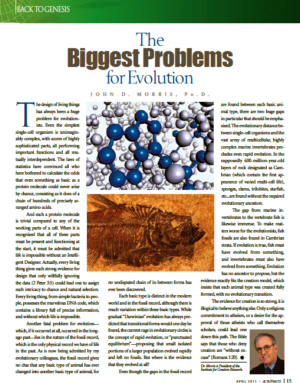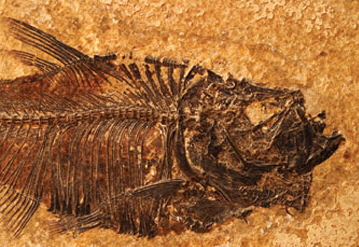While doing some research for a potential post, I was going back and reviewing some of the obvious and indisputably false statements made by creationists that I have documented here on PCwP and in doing so discovered that Answers in Genesis has relegated one of these blunders to the memory hole. In this case, it seems that AiG would rather we forget that their in house “anatomist”, Dr. David Menton, apparently cannot keep his saurischian (“lizard hipped”) dinosaurs and his ornithischian (“bird hipped”) dinosaurs straight—a basic distinction that any child interested in dinosaurs knows.
This by itself would be reason enough to revisit Dr. Menton’s article however an even better reason might be the fact that the interwebs is currently abuzz with the news that Bill Nye (The Science Guy) has agreed, perhaps unwisely, to debate creationist preacher Ken Ham—Dr. Menton’s boss at AiG—this coming February 4th (2014). I believe what follows should give the reader some insight into both the commitment to principled scholarship and the scientific caliber of the people behind Answers in Genesis.
Now You See It, Now You Don’t
As I noted in back in my February 2009 post, “Four and twenty sauropods baked in a pie“, Menton erroneously identified sauropod dinosaurs—long necked giants like Apatosaurus, a.k.a brontosaurus—as being “bird-hipped”, or ornithischian, dinosaurs, making a point of how un-birdlike these massive dinosaurs were, in an article titled “Did Dinosaurs Turn Into Birds?“.
Here is how this section of the article read at the time:
Menton: All dinosaurs are divided into two major groups based on the structure of their hips (pelvic bones): the lizard-hipped dinosaurs (saurischians) and the bird-hipped dinosaurs (ornithiscians)[sic]. The main difference between the two hip structures is that the pubic bone of the bird-hipped dinosaurs is directed toward the rear (as it is in birds) rather than entirely to the front (as it is in mammals and reptiles).
But in most other respects, the bird-hipped dinosaurs, including such huge quadrupedal sauropods as Brachiosaurus and Diplodocus, are even less bird-like than the lizard-hipped, bipedal dinosaurs such as the theropods. This point is rarely emphasized in popular accounts of dinosaur/bird evolution. [Emphasis mine]
This conspicuous blunder, of both taxonomy and comparative anatomy, remained on the AiG site for about five years, then somewhere between April 19th and May 22nd 2013—going by the snap-shots the Internet Archive Wayback Machine takes of websites—they quietly changed this part of the article to read thusly (changes in bold):
Menton: All dinosaurs are divided into two major groups based on the structure of their hips (pelvic bones): the lizard-hipped dinosaurs (saurischians) and the bird-hipped dinosaurs (ornithiscians)[sic]. The main difference between the two hip structures is that the pubic bone of the bird-hipped dinosaurs is directed toward the rear (as it is in birds) rather than entirely to the front (as it is in mammals and reptiles).
But in most other respects, the bird-hipped dinosaurs, including such bizarre creatures as the armor-plated ankylosaurs and the horned ceratopsian dinosaurs, are even less bird-like than the lizard-hipped, bipedal dinosaurs such as the theropods. This point is rarely emphasized in popular accounts of dinosaur/bird evolution. [Emphasis mine]
As you can see, the inaccurate listing of saurischian sauropods, as ornithischians, has become an accurate listing of some actual ornithischians. Which is all well and good, however there is no asterisk, no editor’s note, no update, nothing to let their readers know about this rather spectacular error or the changes made to correct it. It is just gone as if it never happened.
Way to be intellectually honest Answers in Genesis!
Innuendo Ad Nauseam
I will not rehash all the information about the similarities between the hipbones of theropod dinosaurs and various birds, both fossil and living, you can go back and look at my previous post on Menton’s mistake for that. However I am going to take a run at his attempted insinuation (in the last sentence quoted above) that paleontologists are somehow embarrassed by the fact that ornithischian dinosaurs, with their bird-like hips, were otherwise not particularly bird-like and therefore don’t like to bring them up when talking about bird origins.
This makes sense only if you A) have a low very opinion of scientists and think they are involved in a conspiracy to hide things from the general public (which creationists do). And B) are wed to the idea that the superficial resemblance of one feature must imply a close evolutionary relationship; but who does this (aside from creationists that is)?
These two paragraphs of Menton’s article are essentially an irrelevancy, which exists solely for making this innuendo. There may have been some 19th century paleontologists who were impressed by the superficial resemblance of the pelvic bones of ornithischians to those of birds but with very few exceptions (Galton 1970), this idea has been long abandon. If this is “rarely emphasized” in popular discussions of bird evolution it is because it is only of historical interest and not relevant to the current best science on the subject.
That said, some popular works on the subject do in fact discuss it, even including discussions of the armored dinosaurs that Dr. Menton is so keen for us to consider. For example, pulling something of my bookshelf, there is a section of Lowell Dingus & Timothy Rowe’s book The Mistaken Extinction (1998, pp.170-177) where they go on for several pages discussing the different types of ornithischians and how they are, or rather are not, similar to birds.
On the web, there is The University of California, Berkeley Museum of Paleontology’s website that talks about this on their page about ornithischians and hidden in the deep recesses of Wikipedia, where no one is likely to find them, there are multiple references to ornithischians in relation to birds. For example, both the “Origins” section of Wikipedia’s entry on the evolution of birds and the entry for ornithischia talk about ornithischians and birds.
Finally, returning to the printed page, there is every creationist’s most favorite expert on bird evolution* Alan Feduccia (Professor Emeritus at the University of North Carolina), who discussed this in his book The Origin and Evolution of Birds (1999):
Very early on …dinosaurs branched into two major groups delineated by the structure of their hips: the reptile-hipped saurischians and the bird-hipped ornithischians. There has long been a strong temptation to try to derive birds from ornithischians because of this amazing but anatomically superficial resemblance of the hips. Gerard Hellmann in 1926 wrote that “the mere fact that [the pubis] was directed backward, like that of the birds, has evidentially hypnotized several scientists that they have overlooked, or tried to set aside, the many conspicuous differences between the birds and the Predentates [Ornithischia]” (148). …Ornithischians were highly specialized herbivores, too far removed from the main line of dinosaurian evolution to have given rise to any major group. Their line dead-ended with such forms as the duckbills, armored ankylosaurs, plated stegosaurs, and horned ceratopsians like Triceratops. [Feduccia 1999, pp.51-52, Emphasis mine]
As you can see, it is all a big dark secret that evolutionists do not want getting around, so please, please, dear reader, do keep it to yourself.
This Little Piggy Went To Market…
Of course here I have once again been picking the fly poop out of the pepper, taking time to quibble over something nuanced when I should be telling you about how Dr. Menton, has dropped another huge coprolite into our collective cornflakes.
You see while I was revisiting Dr. Menton’s article I decided to take a little more time with it and in doing so I noted a few more amusing anatomical errors. The most glaring having to do with the dromaeosaurid dinosaur called Deinonychus:
Menton: While evolutionists now agree that birds are related in some way to dinosaurs, they are divided over whether birds evolved from some early shared ancestor of the dinosaurs within the archosauria (which includes alligators, pterosaurs, plesiosaurs, ichthyosaurs, and thecodonts) or directly from advanced theropod dinosaurs (bipedal meat-eating dinosaurs, such as the wellknown [sic] Tyrannosaurus rex). The latter view has gained in popularity since 1970, when John Ostrom discovered a rather “bird-like” early Cretaceous theropod dinosaur called Deinonychus.
An adult Deinonychus measured about 12 feet (3.5 m) long, weighed over 150 pounds (68 kg), and was about 5 feet (1.5 m) tall standing on its two hind legs. Like other theropods (which means “beast foot”), Deinonychus had forelimbs much smaller than its hind limbs, with hands bearing three fingers and feet bearing three toes. The most distinctive feature of Deinonychus (which means “terrible claw”) is a large curved talon on its middle toe. [Emphasis mine]
Without getting distracted with the false equivalency Dr. Menton makes between the minority, “(unknown) archosaur origin” camp and the majority “theropod origin” camp*, his description here of the feet of Deinonychus is wrong on at least two counts.
First, Deinonychus like most theropods (and birds) had four toes, not three as Dr. Menton states. In Deinonychus‘ case, three robust forward facing toes and one somewhat reduced backward facing toe—the fifth digit is reduced to a splint bone (Ostrom 1969, p.124).
 Comparative illustration composed by Emily Willoughby (used with permission).
Comparative illustration composed by Emily Willoughby (used with permission).
Second, the large curved claw that gives Deinonychus its name is on the anatomically second toe, not the third, which is the “middle” toe in tetrapods. Nor is it on the “middle toe” if we ignore the existence of Deinonychus‘ reduced first toe (hallux) and pretend it only had three forward facing toes. Even in this case the enlarged toe claws of Deinonychus are on the inside toes of its feet, not the middle toes.
 The photograph on the left is by Denver W. Fowler and was taken of a specimen on display at Museum or the Rockies, Bozeman, Montana (used with permission, for more on Deinonychus see Fowler et al., 2011). The drawing on the right is from the Yale Peabody Museum website.
The photograph on the left is by Denver W. Fowler and was taken of a specimen on display at Museum or the Rockies, Bozeman, Montana (used with permission, for more on Deinonychus see Fowler et al., 2011). The drawing on the right is from the Yale Peabody Museum website.
So no matter how you count these little piggies, whether from a technical anatomical perspective, or just informally, Dr. Menton, creationist anatomist extraordinaire, is mistaken once again.
This leads to a couple of questions. If Dr. Menton does not know such basic facts as, what types of dinosaurs are ornithischians or saurischians, how many toes theropod dinosaurs had, or which toes are which, why should anyone take his opinions on the more complex question of the evolutionary relationship between theropods and birds seriously?
And why would anyone put their trust in Answers in Genesis as a reliable source of information if they apparently willing to cover up this sort of ignorance, which had been on their site, misinforming their readers for years, by quietly changing things without any sort of notice or acknowledgement?
I leave the answers to the reader.
It Is Thus Because It Pleased God To Make It Thus
There is much more in Menton’s article that needs to be addressed and I am going to separate those into a second post. However, there is one last statement by Menton to attend to here. You see just about right in the middle of his article Menton dropped an anti-science bomb that seems to render the rest of his arguments effectively meaningless.
Menton: What would it prove if features common to one type of animal were found on another? Nothing. Simply put, God uses various designs with various creatures. Take the platypus, for example—a mosaic. It has several design features that are shared with other animals, and yet it is completely distinct. So if a dinosaur (or mammal) is ever found with feathers, it would call into question our human criteria for classification, not biblical veracity. What’s needed to support evolution is not an unusual mosaic of complete traits, but a trait in transition, such as a “scale-feather,” what creationist biologists would call a “sceather.” [Emphasis mine]
I’ll save my barbs about the platypus, feathered mammals and “sceathers”, for part two, because the main point here (which makes those things and pretty much everything else in his article irrelevant) is Menton’s offhanded dismissal of the significance such things as feathered dinosaurs. His statement essentially boils down to an argument that such things as feathered dinosaurs, fish with feet or “ape-men”—you know, transitional or intermediate forms—are merely the creations of a whimsical deity who chose to arbitrarily to mix and match characteristics of different groups of organisms and are therefore irrelevant. After all God can make anything, in anyway he chooses and for any reason he see fit to do so.
This is also known as “using the miracle card” or an appeal to magic. Dr. Menton is of course free to do this; however, in doing so he abandons all pretence of doing science, or even attempting to make rational arguments.
Why does he bother arguing about different anatomical or physiological features of dinosaurs and birds? Why does he bother to fold, spindle, or mutilate the facts about these things and to misquote scientists regarding them (more on this in part two), if in the end you just going to say, “regardless of the facts, it is the way it is because God did it that way, period”?
It would save everyone a lot of time if he just said this sort of thing up front, so that rational people, who actually accept science and who care about the facts, will know that his claims can be dismissed without further consideration.
So, those are the major things I wanted to address first—and where some of you might want to stop and get off—however, for those of you who are gluttons for punishment, there is, as I said, much more in Dr. Menton’s article that is of false and or misleading nature to be addressed. I will examine those in a separate post.
Fairly warned ye be!
Footnote
*Alan Feduccia is part of a shrinking minority of scientists who deny the evidence that birds evolved from theropod dinosaurs in favor of an older hypothesis that birds evolved from an earlier unknown group of archosaurs (a group that includes crocodilians, pterosaurs, dinosaurs and smattering of other extinct types). Their frequent and often strident attacks on the evidence that birds evolved from theropod dinosaurs make Feduccia, and others like him (the late Larry Martin for example), the go to scientists for creationists to quote on the subject of bird evolution. Creationists use their attacks on the mainstream view of bird evolution to try to cast doubt on whether birds evolved at all.
See:
References
Dingus, Lowell & Rowe, Timothy (1998) The Mistaken Extinction, W. H. Freeman and Company, New York, NY
Fedducia, Alan (1999) The Origin and Evolution of Birds (2nd Edition), Yale University Press, New Haven, CT
Fowler DW, Freedman EA, Scannella JB, Kambic RE (2011) “The Predatory Ecology of Deinonychus and the Origin of Flapping in Birds“, PLoS ONE 6(12): e28964
Galton, Peter M. (1970) “Ornithischian Dinosaurs and the Origin of Birds”, Evolution, 24(2): 448-462
Ostrom, John H. (1969) “Osteology of Deinonychus antirrhopus, an Unusual Theropod from the Lower Cretaceous of Montana”, Peabody Museum of Natural History Bulletin, 30:1-165









